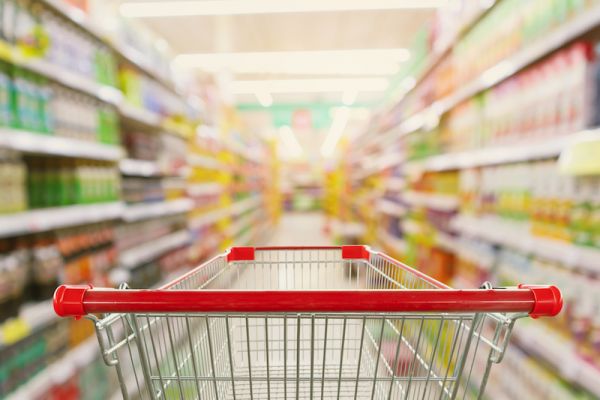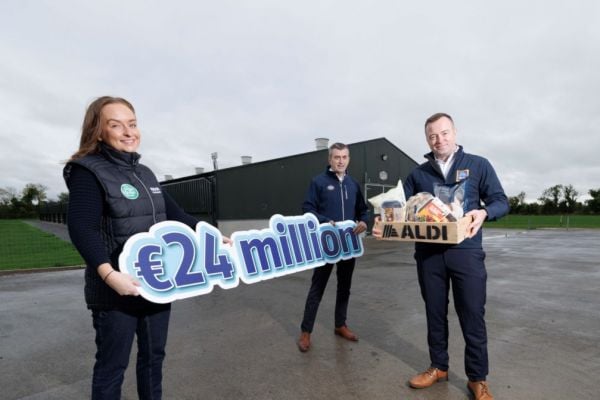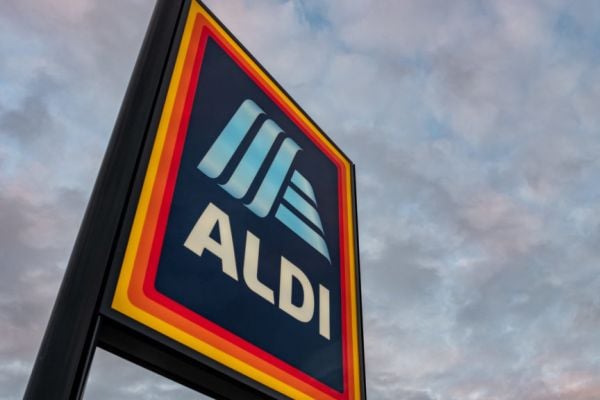Retail industry consultant, Malachy O'Connor looks at what Kantar Worldpanel’s monthly share statistics tell us about what is really happening in grocery retail
he Kantar Worldpanel data for the 12 weeks to 14 June places SuperValu in first place with 22.9% market share of the take- home grocery market. Tesco have solidified second place with 21.5% and Dunnes stay third, having slipped further to 20.5% market share. Lidl are fourth with 12.2% and Aldi are fifth with 11.9%.
SuperValu have the strongest trajectory, thanks to private label investment and pandemic proximity.
Out Of Home Shifts To In-Home
Every retailer has seen significant sales growth in the last 12 weeks of the Covid-19 lockdown. The take-home groceries market grew by 24.7% and it wasn’t due to panic buying or sales of hand sanitiser and hair colouring. Rather, the primary reason for this unprecedented uplift was the almost total closure of the ‘out of home’ sector.
I don’t think any of us fully realised just how much we were spending on coffees, lunches, restaurant meals, take away food, and the few sociable pints in our local. But in lockdown, these options were removed and all of our consumption switched to in-home i.e. purchased in a supermarket.
These numbers are all estimates, but the out of home sector (food, drink and alcohol) is thought to be worth over €9 billion in sales per year. But, eating and drinking out of home is four to five times more expensive, so maybe 20% to 25% of the €9 billion transferred, creating growth of between 16% and 20%.
Other Factors
Why is the Irish market growing at almost 25% when the UK grew at +13.7%?
Depending on factors like the exchange rate and the price of diesel, cross border shopping has historically represented between 0.5% and 1.5% of the Republic of Ireland market.
Lockdown restrictions would have retained most of this spending within the Republic of Ireland located stores. Also, the average selling price has increased as shoppers are switching to brands, and brands cost more than private labels.
During the ‘peak fear’ period in mid-April, shoppers were looking for the reassurance of trusted brands but, as time has progressed, the switch to brands can be better explained by two factors.
SuperValu and Centra are the biggest beneficiaries of store level switching and both of these are more branded houses, especially relative to the discounters, and some retailers have
prioritised the availability of brands over private label due to the positive impact on margin mix. Another key contributor to the growth of the Irish market relative to the UK is the fact that shoppers have been staying ultra-local. For many, this means shopping in a convenience store, and there is always a premium for this.
Supermarkets have taken the gas off some promotional activity. Initially, this was to deter bulk buying, but other factors came into play as the lockdown progressed, and we can see this clearly in the alcohol and produce categories.
For instance, with families locked down and going stir-crazy, it would have been morally questionable to promote 24 cans for €20 this Easter.
Furthermore, the supermarkets have taken a huge hit in their operating costs. All of the extra staff, frontline bonuses, sanitation protocols, POS etc come at a cost. So, rather than putting up prices, they can play around with the weight and penetration of promotions. We can see this in the various Super-5s, Super-6s and Super-7s as there have been a lot more low-volume products, and not necessarily at the traditional 49c price-point either.
While many people have taken an income hit, many others continued to work from home, but with only a tiny fraction of the costs they would usually have.
The Central Bank has reported a record increase in household savings. And some shoppers are actively looking to trade up and spend more as a treat to help them get through this difficult time. So, what does the future look like?
Turbulence For Retailers
Firstly, in the short-term, it is going to be a period of continued turbulence for grocery retailers. As the restaurants and pubs start to re-open, some of that spending shift will drift back to the out of home sector. But, on the other hand, there won’t be any ‘summer dip’. The hundreds of thousands of Irish families that normally travel overseas will have to make do with a staycation this year. It will be a challenge to forecast the volumes, so extra communication is advisable.
Online
Secondly, it will be fascinating to see how the online channel evolves. Kantar reckon that the channel has grown by 114% year-on-year in the last 12 weeks.
Tesco are investing in increased capacity, SuperValu have picked up lots of new customers, Centra did an excellent job of launching their online service so quickly, Lidl continue to partner with Buymie.ie, and both Aldi and Dunnes have commenced trials, partnering with Deliveroo and Flipdish respectively.
But the bottom line is that it is almost impossible to make money in online groceries. So supermarket businesses that pride themselves on paying market leading rates for their own staff will likely tread with caution. It is one thing if the partnership is based on speed of entry in a complex channel. But it is an entirely different proposition if the only way to make commercial sense of online groceries is by engaging the gig economy.
Storms Brewing
I think we are all agreed that the long-term economic outlook isn’t good, but the majority of consumers have not yet seen a major reduction in their spending power.
We will get a truer picture by the end of the year, and it might be quite bleak for consumers. The last recession led to a significant golden period for the discounters as shoppers swapped and saved, but the terrain is different now.
The discounters do not have the same price advantage, in Ireland at least. Tesco, Dunnes and SuperValu have all invested in vastly expanded private label ranges, some form of EDLP and price-matching activity, supported by a price index that is measured frequently to spot any movements in the market.
This has led to significant deflation, since 2014 especially, when Tesco commenced their re-set and turn-around plan.
Plus the discounters have themselves evolved in both sophistication and complexity, with massively expanded ranges of short-life, fresh
and premium products, introducing factors like food waste, which would previously have been a non-issue.
Pressure is Building
The future is likely to be just as challenging for suppliers. After a period of close collaboration between retailers and suppliers, keeping the supply chain full and shelves stocked, it looks like there is considerable pressure building.
The retailer’s margin mix has been skewed heavily, their costs have gone up, there is a recession coming down the tracks, and the discounters are still expanding their store estate.
Tesco UK is implementing a new strategy – it gave suppliers until 10 July to agree to cost price reductions and a switch to EDLP and Clubcard loyalty promotions to support a price war with Aldi.
Smart suppliers will be investing in efficiency, commercial strategy and cost-killing projects to ensure that they can better brace themselves for the storm that is brewing.
© 2020 Checkout – your source for the latest Irish retail news. Article by Malachy O'Connor. Click sign-up to subscribe to Checkout.








